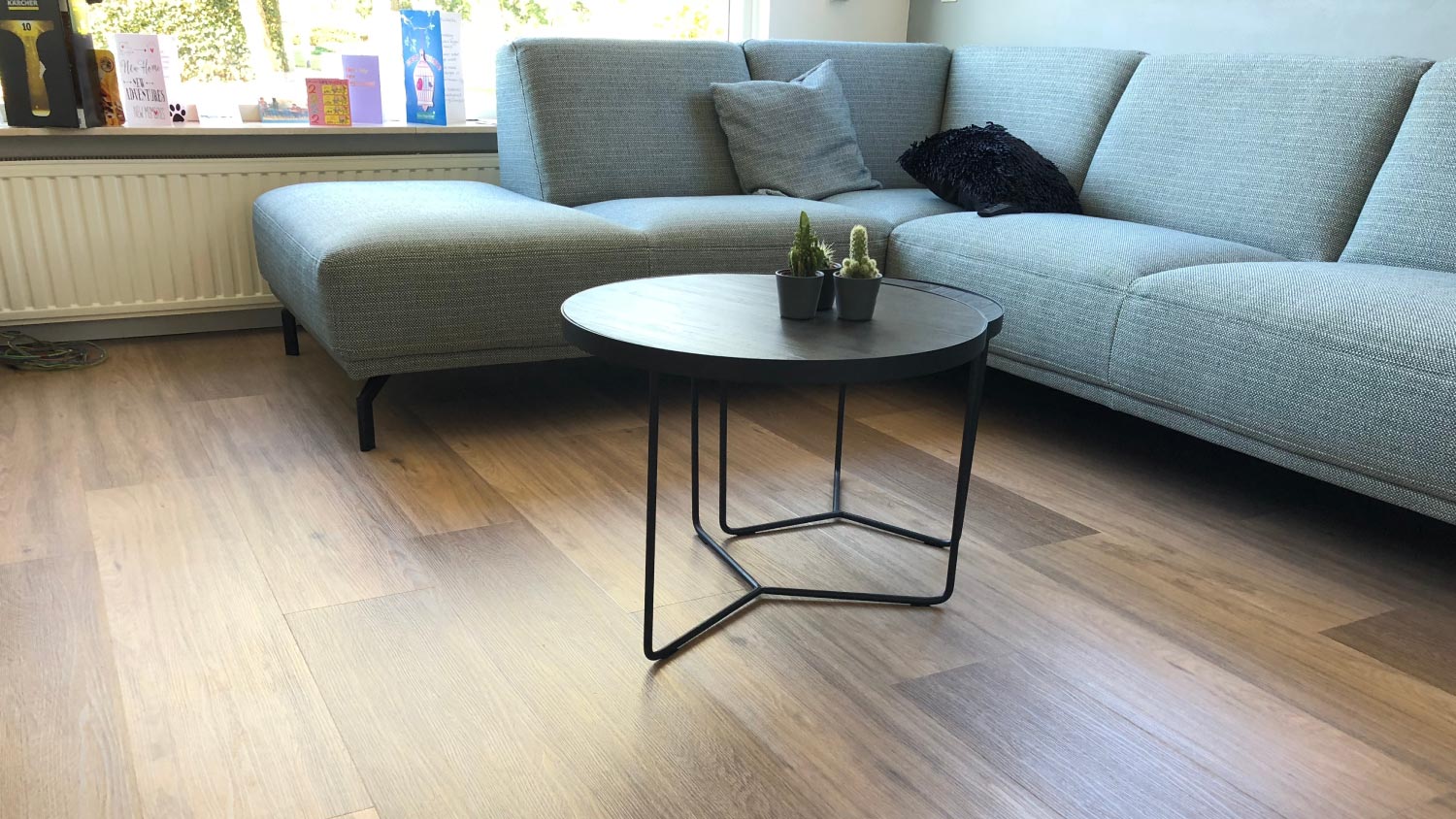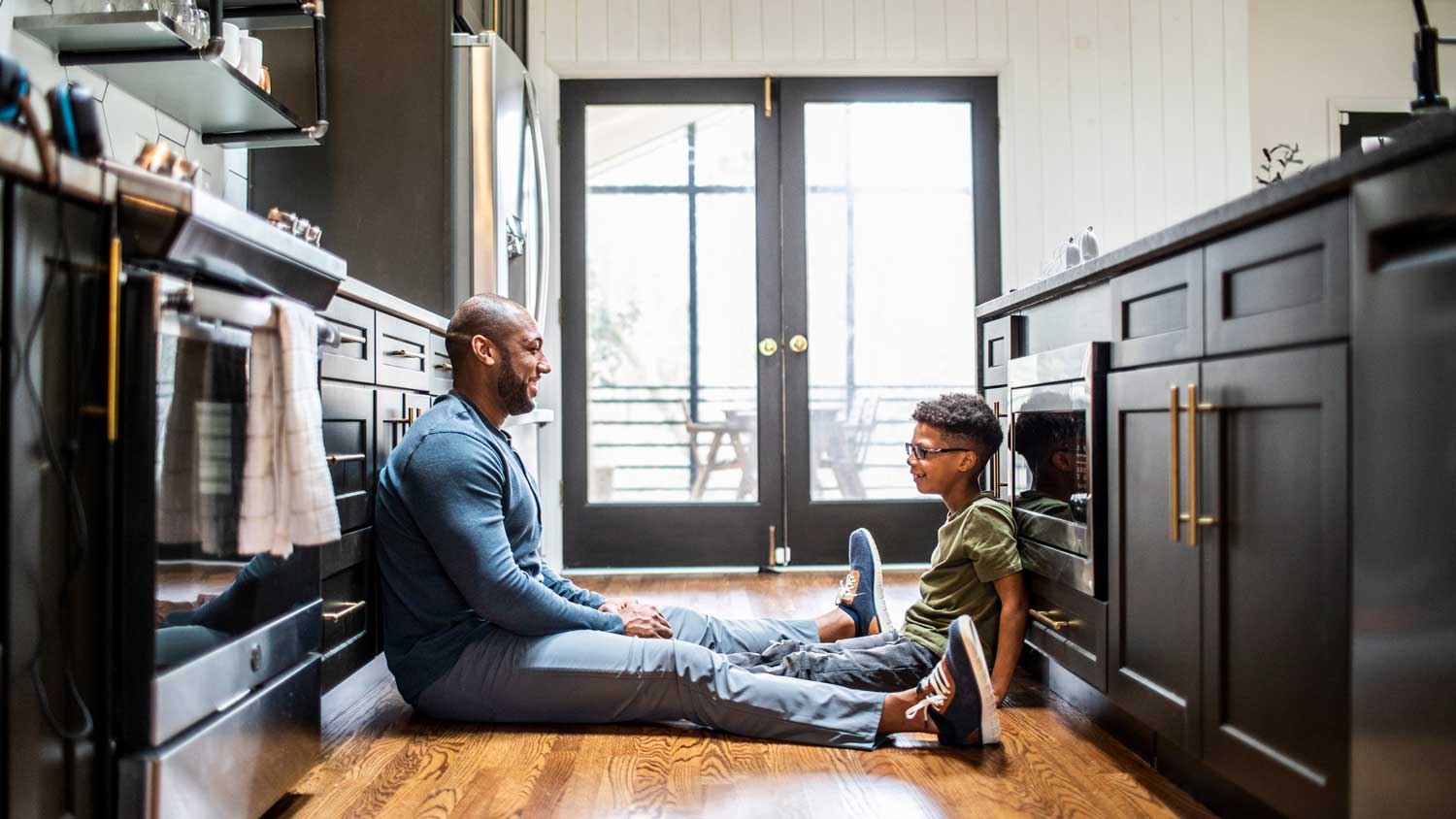
Cork is a good option if you want a beautiful, natural floor. Here are all of the cork flooring costs you can expect as you plan your project.
Peel up glued-down flooring with relative ease


Remodeling an older home means demolition and removal of outdated materials. Linoleum flooring is an example, and it can be challenging to get up due to the use of adhesives and the potential presence of hazardous asbestos. However, if you know the precautions and steps to follow, learning how to remove linoleum flooring can be straightforward.
If you know or suspect that your linoleum flooring was installed before the 1980s, there is a risk that the flooring contains asbestos. This hazardous material poses a serious health risk if disturbed due to toxic particles that can become airborne and breathed in.
To ensure your safety, do not cut into the linoleum until you've used an asbestos test kit or had a professional asbestos inspection. If asbestos is confirmed to be present, you must hire a licensed asbestos removal specialist near you. Expect the cost of asbestos removal in linoleum flooring to be anywhere from $5 to $15 per square foot.

Once you've confirmed that your linoleum floor does not contain asbestos, removing it is fairly straightforward. To remove linoleum flooring, score the floor with a utility knife, use heat to soften it, peel it up with a floor scraper, and remove the adhesive with a solvent. Follow the steps below for more details.
Start by clearing the room of all furniture, décor, appliances, and trim. Have a plan for where it will be stored while you work since this project can take multiple days.
Wrap furniture in moving blankets to prevent damage, and get help moving heavier items to avoid injury. Safely disconnect water, electrical, or gas supply lines before moving appliances. Finally, remove baseboards from the room's perimeter, labeling them if you plan to reattach them after the project is complete.

The easiest way to remove a linoleum floor is piece by piece. Use your utility knife to carefully cut the floor into small sections of 12 to 24 square inches. Cut through the flooring all the way to the subfloor or slab below. When you're finished scoring, you'll be left with a grid pattern across the entire floor.
A heat gun or hair dryer on a high setting can soften the adhesive beneath the linoleum, making it easier to lift away. Carefully move the heat gun over the first section of flooring for about 15 seconds. If the floor isn't soft enough to scrape up after 15 seconds, continue heating it in ten-second increments until it is.
Use a power floor scraper to lever up the scored sections of flooring using your tool of choice and peel it back to remove it from the subfloor. You can also use a putty knife if you don’t have access to a floor scraper. However, this will require much more manual labor and significantly increase your project time.
You'll likely find a layer of old adhesive residue under the linoleum flooring. Use a solvent-based adhesive remover like paint thinner to break down the glue. Once it's softened, use a scraper to remove it by applying gentle pressure and pushing forward at an angle.

Some local recycling centers will recycle old linoleum flooring, so contact them to see if they'll pick it up or accept a drop-off. Otherwise, place the old flooring into heavy trash bags or rent a dumpster.
Removing linoleum flooring as a DIY project costs an average of $165 to $265. Most of that cost is the price of renting a floor scraper.
However, the amount of manual labor involved and the danger of asbestos make this a project that most homeowners leave to the pros. You can hire a local vinyl floor company to remove linoleum flooring for about $1 to $6 per square foot. This amounts to anywhere from $200 to $900 in a kitchen or bedroom or up to $1,020 in a large living room.
From average costs to expert advice, get all the answers you need to get your job done.

Cork is a good option if you want a beautiful, natural floor. Here are all of the cork flooring costs you can expect as you plan your project.

Updated flooring can make any room in your home feel brand new. Explore flooring installation costs in St. Louis, MO, from materials to labor costs.

The cost to rip up carpets and install laminate depends on factors like labor prices, materials, and location. Use this guide to get a detailed cost overview.

Updated flooring can make any room in your home feel brand new. Explore flooring installation costs in Tampa, FL, from materials to labor costs.

Updated flooring can make any room in your home feel brand new. Explore flooring installation costs in Atlanta, GA, from materials to labor costs.

Floor joists are an important part of your flooring system. Learn more about what a floor joist is, what it does, and when to repair it.